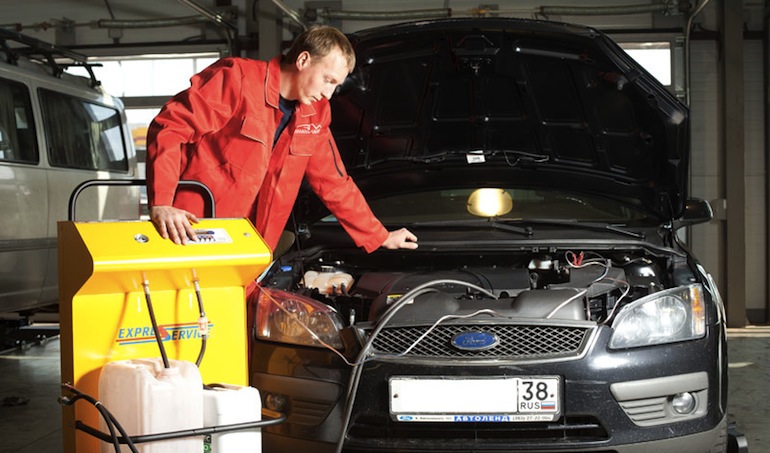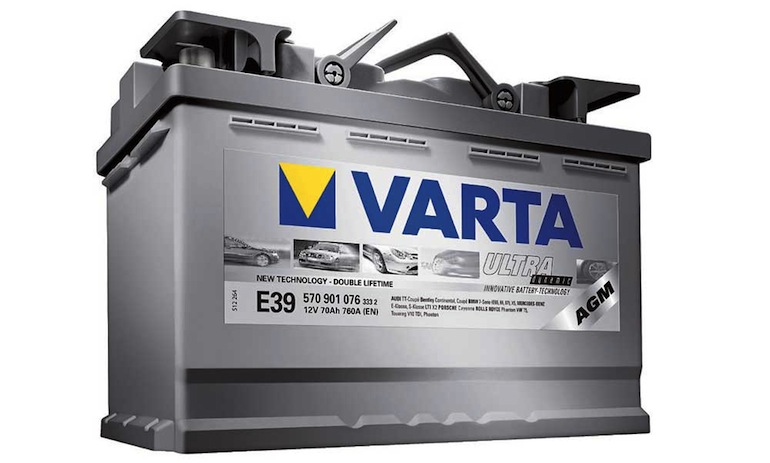
Preparing a car for winter for “dummies” or how to do everything right?
Winter, as you know, is not the most favorable time for motorists. To use your car without problems, without experiencing a number of difficulties, you need to seriously prepare for extreme conditions.
Tire choice - studded or non-studded?
Preparing for winter is primarily associated with the transition to winter tires. We have already written about the best studded tires in 2013-14. There are also a wide range of cheaper options. In addition, a large number of non-studded winter tires are sold. Which one to choose? When choosing between studded and non-studded tires, experts advise paying attention to a number of factors:
- studded tires provide excellent grip on ice and hard-packed snow;
- studless is suitable for driving on asphalt and slush, a tread with a large number of cups and Velcro - sipes - provides stability on roads covered with snow porridge, as well as moisture and dirt removal;
- with studded tires, you need to drive very carefully on bare asphalt, with sudden braking, the studs can simply be pulled out, besides, the studs will click on the asphalt and the likelihood of skidding increases.

Hence the conclusion: beginners are advised to install studded tires, but experienced drivers choose depending on where they mostly drive - in city conditions, non-studded tires are quite suitable. Although, this question is ambiguous and causes a lot of controversy.
The only thing that experts do not advise is to buy all-season tires, because it is inferior to summer tires in summer, and in winter in winter.
Replacing process fluids
A common problem faced by drivers with the onset of the first cold weather is frozen fluid in windshield washer reservoir. In winter, the windshield needs to be cleaned more often, because all the slush and dirt fly onto it, and wet snow sticks to it. It is also necessary to check the condition of the wiper blades, they are recommended to be changed every six months to a year. Windshield washer fluid is best to choose expensive brands and dilute in accordance with the manufacturer's instructions.
The most popular product in winter is antifreeze or antifreeze. Without this fluid, the normal operation of the engine is impossible - in the summer it does not allow it to overheat, and in the winter to overcool. Buying antifreeze of well-known brands, you free yourself from the need to properly dilute it, while antifreeze must be diluted in a certain proportion.
Automakers indicate which type of antifreeze is compatible with the engine cooling system - red, yellow, green.
It is also necessary check engine oil viscosity. Since in our conditions all types of engine oil are all-weather, there is no need to replace, however, for engines that have worked out most of the resource, switching, for example, from 10W-40 to 5W-40 can have a positive effect on work - it will start better when low temperatures. But there is one “BUT”, the transition from one viscosity to another is an additional load on the engine, therefore it is recommended to replace it in advance, before the onset of cold weather, so that the engine gets used to this oil.

It is worth noting that low temperatures have a very negative effect on diesel and injection engines. Diesel is generally a “hot topic”, since diesel fuel becomes viscous in the cold, and it will be much more difficult for the starter to turn the crankshaft on thickened engine oil, so switching to a less viscous winter oil is a good solution to the cold start problem.
It is also necessary to check all other types of lubricants and fluids: brake fluid (Rosa, Neva, Dot-3 or 4), transmission oils in the box, power steering fluid. That is, the threshold of winter is a great time for a complete revision of the condition of your car.
Battery
The battery in the cold discharges faster, especially if the car is parked in the open. Before the onset of cold weather, it is recommended to check the condition of the battery. Its service life on average varies between 3-5 years. If you see that the battery is already becoming obsolete, then it is better to replace it in the fall, while there is no such hype and prices do not jump up sharply.
If the battery is still fully functional, then check the density and electrolyte level - provided that the battery is serviced or semi-serviced. You need to unscrew the plugs with an ordinary coin, or remove the top cover and look into the holes, the plates must be covered with electrolyte evenly, there is also a special plate indicating the level. Top up with distilled water if necessary.

You also need to check the terminals for white salt growths and signs of corrosion, all this must be cleaned and removed with a solution of salt or soda, sandpaper.
If possible, then in winter the battery can be removed and brought into heat - 45 or “sixty” do not weigh that much.
The driver also needs to take care of the paintwork and corrosion protection, for this you can use various polishes or films. To prevent excess moisture from collecting in the cabin, check the condition of the air conditioner, replace the cabin filter. See if the stove works well, heated windshield and rear-view mirrors. If you are well prepared, you will survive the winter without any problems.
We offer you to watch a video from a professional on preparing a car for operation in the winter season.
Loading…
